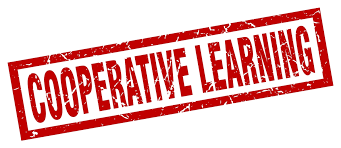The learning model needs to be understood by the teacher in order to carry out learning effectively in improving learning outcomes. In its application, learning models must be carried out according to the needs of students because each learning model has different goals, principles and pressures.



Among the learning models, the cooperative learning model is a unique learning model, because the cooperative learning model is a different structure of tasks and rewards in pursuing student learning. The task structure requires students to work together in small groups. The cooperative learning model grows out of an educational tradition that emphasizes thinking and practicing democratic action, active learning, cooperative behavior, and respecting differences in a multicultural society.
Panitz (Thobroni, 2015) suggests that there are two social-based learning, namely cooperative learning, hereinafter abbreviated as CL and collaborative learning. Cooperative learning is a broader concept, encompassing all types of group work including more teacher-led or teacher-directed forms.
According to Poppy, KD (2007) there are several things that need to be fulfilled in cooperative learning in order to better guarantee students work cooperatively, these things include:
- Students in their groups must assume that they “live in the same direction”.
- Students are responsible for everything in their group, as if it were their own.
- Students must see that all members in their group have the same goal.
- Students must share the same tasks and responsibilities among group members.
- Students will be subject to evaluation or given prizes/awards which will also be applied to all group members.
- Students are in a variety of leadership and they need skills to learn to work together during the learning process.
- Students will be asked to individually account for material handled in groups.One of the cooperative learning models is the Make a Match type which was developed by Lorna Curran in 1994. One of the advantages of this model according to Rusman, (2014) is “Students look for partners while learning about a concept or topic in a fun atmosphere”. This technique is commonly used in all subjects and for all levels.
- Steps of the Make a Match Type of Cooperative Learning Model
The Make a Match type of cooperative learning model aims to broaden students’ insights and accuracy in exploring a concept. Before the game begins, the teacher conveys learning objectives, learning motivation, subject matter, organizes students, conveys game steps, guides students, and evaluates results and gives awards. Rusman (2014) writes that the use of the Make a Match Type Cooperative learning model follows the following steps:1. The teacher prepares several cards containing several concepts or topics that might be suitable for a review session (one side of the card is a question card and the other side is a question card). answer).
2. Each student gets one card and thinks of an answer or question from the card he is holding.
3. Students look for a partner who has a card that matches their card (question card/answer card)
. 4. Students who can match their cards before the time limit are given points.
5. After one round the cards are shuffled again so that each student gets a different card than before, and so on.
6. The last process of this learning model is to make clarifications and conclusions.
The phases in the make a match type learning model The phases of the Make a Match type cooperative learning model are as follows :
Cooperative Learning Model Steps Type Make a Match
Phase
The Make a Match Cooperative Model
Phase 1
Delivers goals and motivates
Phase 2 students
Presenting
Phase 3 information
Organize students into study groups
Phase 4
Guiding work and study groups
a. Prepare question cards and answer cards
b. Each student gets one card
c. Individual thinking
d. Looking for a card that matches the card
e. Make clarifications and conclusions
Phase 5
Evaluation
Phase 6
Awarding
Source: Lie (2008)
- The strengths and weaknesses of the Make a Match Type Cooperative Learning Model
This Make a Match type of cooperative learning model has strengths and weaknesses. The advantage is that it can train precision, accuracy, and accuracy and speed in solving problems. Meanwhile, the weaknesses are fast time, lack of concentration, and can cause noise for other classes.
#Cooperative Learning Model Make a Match Type